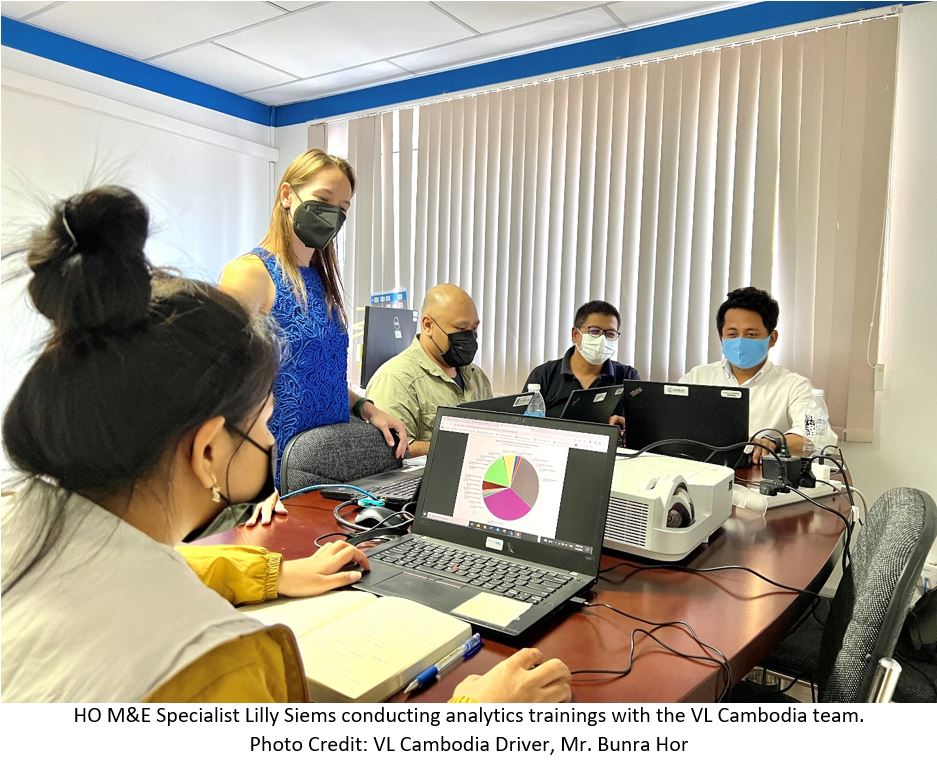How do you deliver ITNs through school-based distribution when public school teachers go on strike? This was the situation Prince Owusu and the VectorLink Ghana team found themselves in when a nationwide teacher strike occurred during the school-based distribution. This week’s Fist Bump goes to the VectorLink Ghana team for working through the strike to deliver over a million ITNs to pupils.
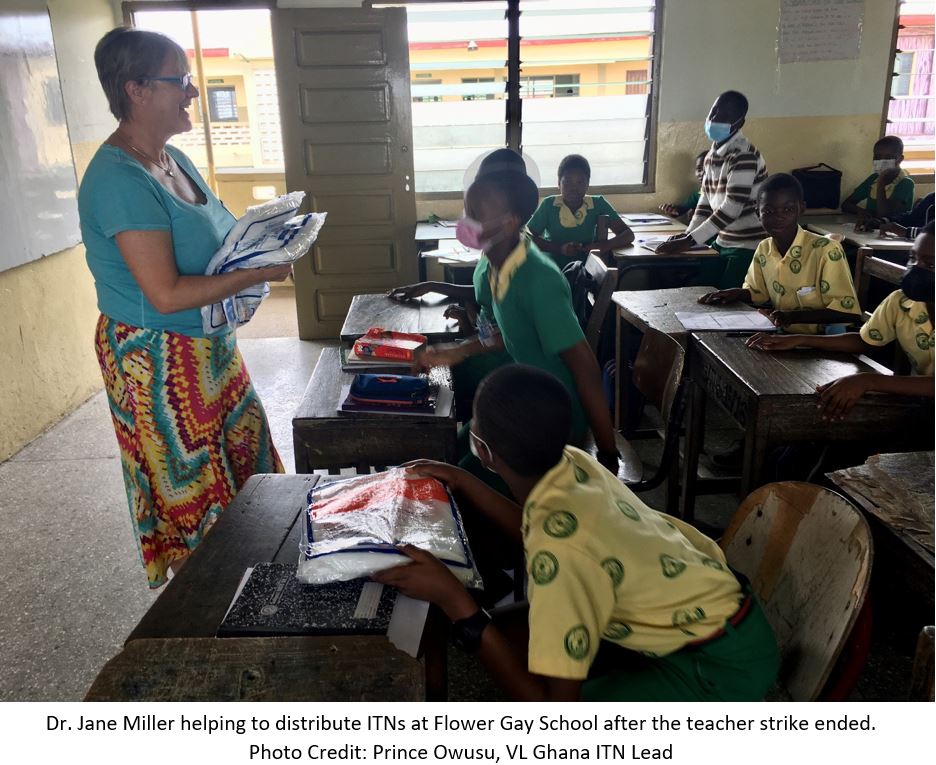
The National Malaria Control Program (NMCP), assisted by VectorLink Ghana and the School Health Education Program (SHEP), had planned to distribute 1,476,362 nets to primary school pupils in Year 2 (ages six and seven) and 6 (ages 11 and 12), but without teachers to distribute the nets, pupils had no way of getting them.
To enable the distribution to move forward, the NMCP and SHEP, with VL Ghana’s assistance, organized the distribution, ensuring the enrollment data was received, and monitored it. They also trained 3,331 regional and district officers from the Ghana Education Service and Ghana Health Service in distribution planning and management, and supervision, including the use of the Net4Schs app that records and reports the distribution data.
In rural and semi-urban areas, VL Ghana, the NMCP, and SHEP used community information centers to disseminate information on ITN availability and when pupils and parents could pick them up. In these areas, pupils still came to school as communication about the strike was delayed by two to three days. Forty-five percent of primary schools in Ghana are also private, so those pupils were still able to receive their ITNs.
Even with the strike, VL Ghana, the NMCP, and SHEP distributed over 1.4 million nets, protecting over 2.8 million people from malaria-carrying mosquitoes.
Excellent work ensuring pupils received their ITNs, VL Ghana!
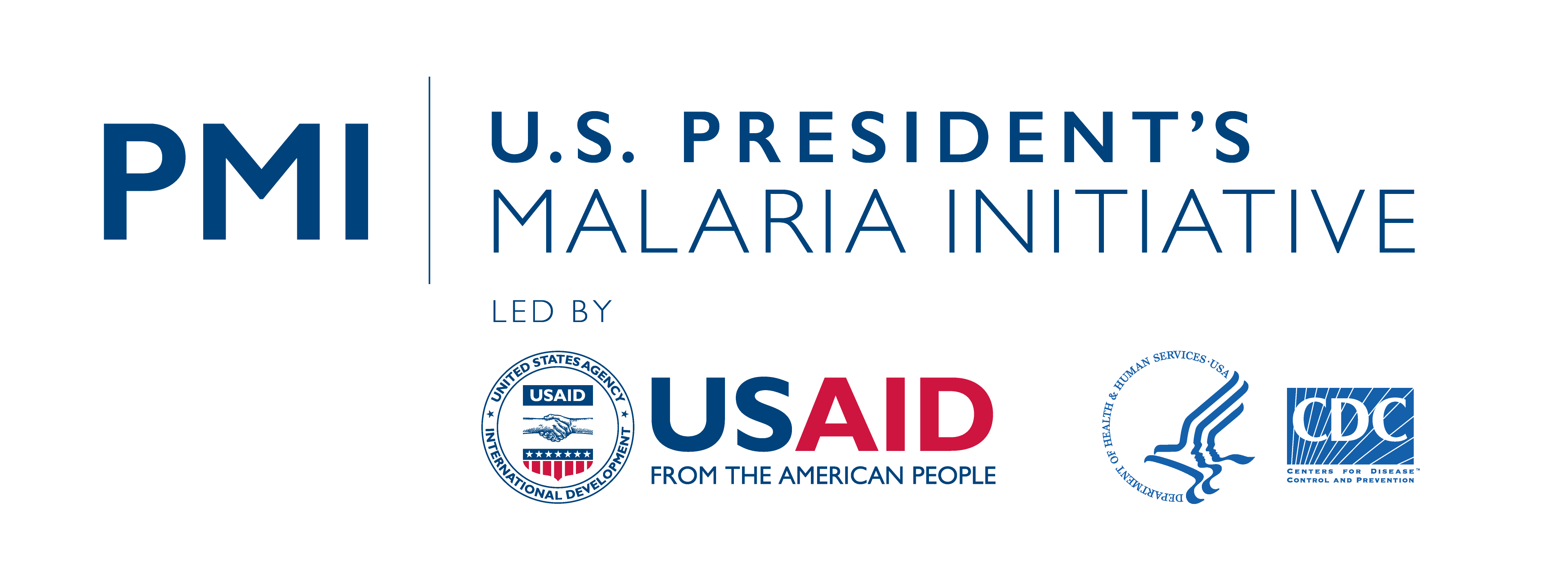

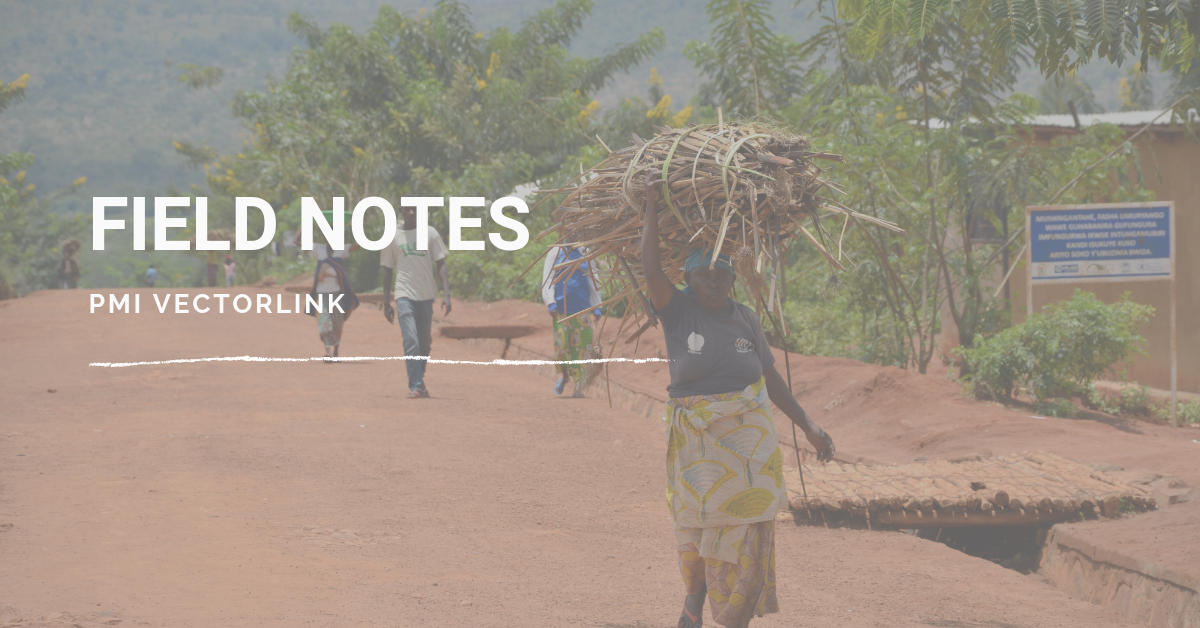
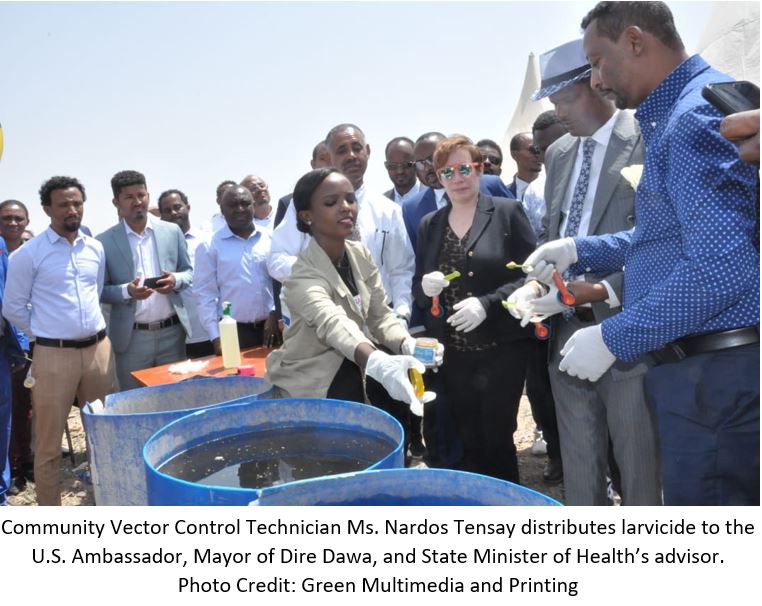 We’ve all been hearing about Anopheles stephensi. We have even had a few different journal articles come out about this invasive vector in the Horn of Africa that is beginning to spread across the continent. And starting yesterday, VectorLink Ethiopia launched the larval source management (LSM) activity to control this mosquito. This week’s Fist Bump goes to the entire VL country and home office Ethiopia team for working so diligently to get this activity up and running.
We’ve all been hearing about Anopheles stephensi. We have even had a few different journal articles come out about this invasive vector in the Horn of Africa that is beginning to spread across the continent. And starting yesterday, VectorLink Ethiopia launched the larval source management (LSM) activity to control this mosquito. This week’s Fist Bump goes to the entire VL country and home office Ethiopia team for working so diligently to get this activity up and running.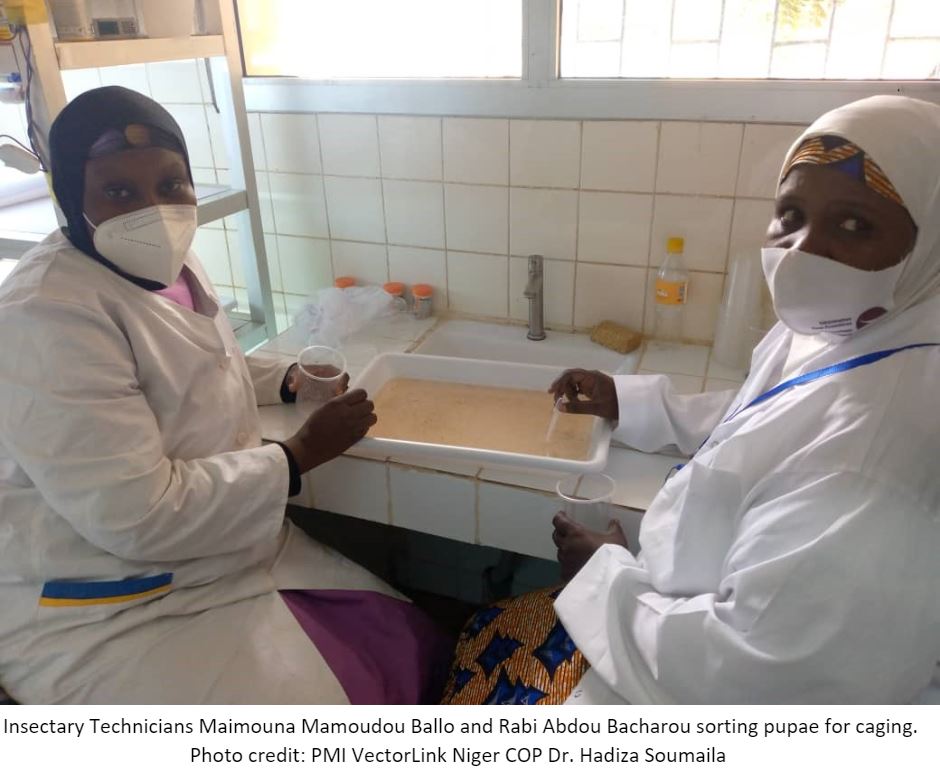 In 2021, PMI VectorLink Niger supported the rehabilitation of the insectary at the Centre de Recherche Medical et Sanitaire (CERMES), equipping it with brand new equipment and supplies, along with temperature and humidity controls required to adhere to the international standards for mosquito rearing for research. The project also supported the training of two technicians, recruited and hired by CERMES, in insectary management and rearing susceptible Anopheles gambiae Kisumu with eggs provided by insectaries in Côte d’Ivoire and the UK. This week’s Fist Bump goes to the insectary technicians, Maimouna Mamoudou Ballo and Rabi Abdou Bacharou, two women who have done an outstanding job with the management and maintenance of the mosquito colonies.
In 2021, PMI VectorLink Niger supported the rehabilitation of the insectary at the Centre de Recherche Medical et Sanitaire (CERMES), equipping it with brand new equipment and supplies, along with temperature and humidity controls required to adhere to the international standards for mosquito rearing for research. The project also supported the training of two technicians, recruited and hired by CERMES, in insectary management and rearing susceptible Anopheles gambiae Kisumu with eggs provided by insectaries in Côte d’Ivoire and the UK. This week’s Fist Bump goes to the insectary technicians, Maimouna Mamoudou Ballo and Rabi Abdou Bacharou, two women who have done an outstanding job with the management and maintenance of the mosquito colonies. 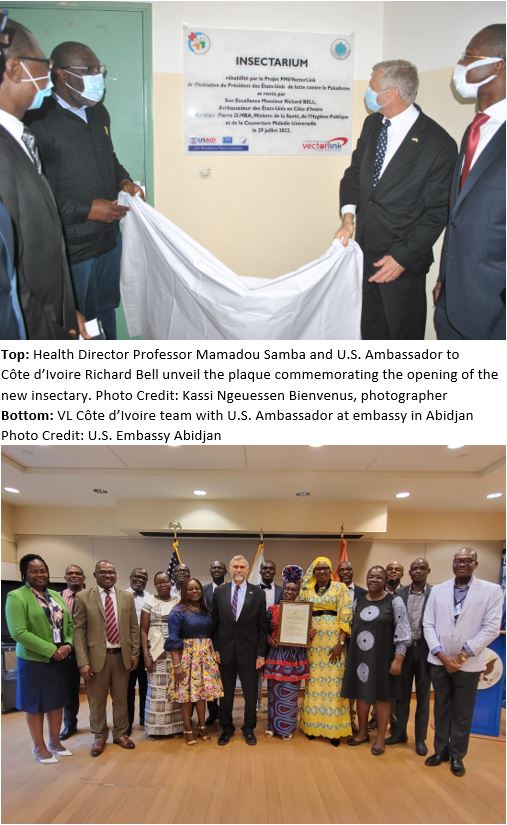

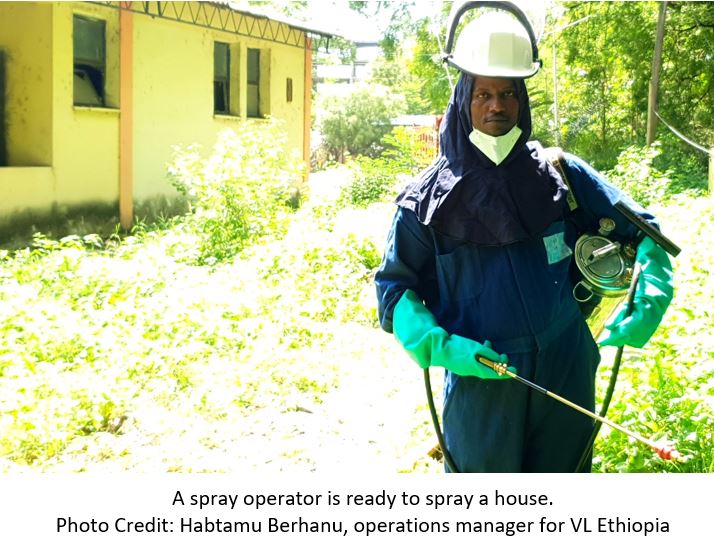 This week’s Fist Bump goes to PMI VectorLink Ethiopia, a team that is no stranger to navigating an IRS campaign around challenging circumstances. With targeted districts of varying risk, the team had to exercise high levels of flexibility and grit.
This week’s Fist Bump goes to PMI VectorLink Ethiopia, a team that is no stranger to navigating an IRS campaign around challenging circumstances. With targeted districts of varying risk, the team had to exercise high levels of flexibility and grit.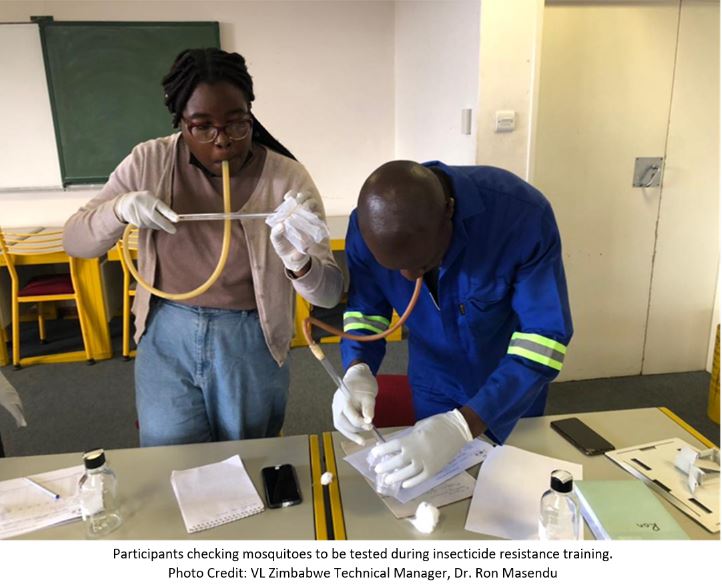 Recognizing which mosquito species carry the malaria parasite and understanding which insecticides may or may not still be effective is critical to successful vector control. This week’s Fist Bump goes to VectorLink Zimbabwe’s Technical Manager, Dr. Ron Masendu, for conducting a capacity strengthening training on insecticide resistance monitoring and morphological identification of Anopheles mosquitoes with Africa University (AU) staff.
Recognizing which mosquito species carry the malaria parasite and understanding which insecticides may or may not still be effective is critical to successful vector control. This week’s Fist Bump goes to VectorLink Zimbabwe’s Technical Manager, Dr. Ron Masendu, for conducting a capacity strengthening training on insecticide resistance monitoring and morphological identification of Anopheles mosquitoes with Africa University (AU) staff. 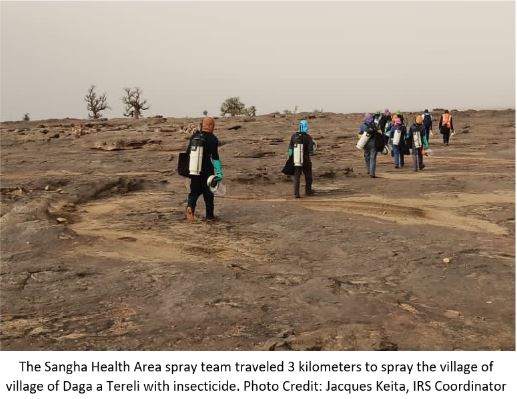 IRS campaigns can be tough. When teams operate in high-risk security situations, campaigns can be even tougher. This week’s Fist Bump goes to the VectorLink Mali team for not just successfully completing their IRS campaign early, but for also doing so after a three-day pause at the beginning of the campaign due to tragedy.
IRS campaigns can be tough. When teams operate in high-risk security situations, campaigns can be even tougher. This week’s Fist Bump goes to the VectorLink Mali team for not just successfully completing their IRS campaign early, but for also doing so after a three-day pause at the beginning of the campaign due to tragedy.